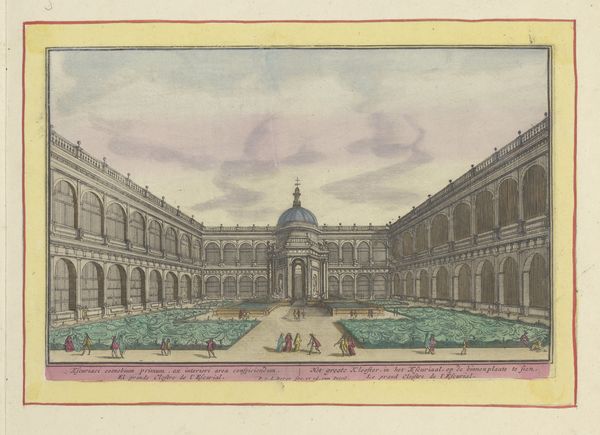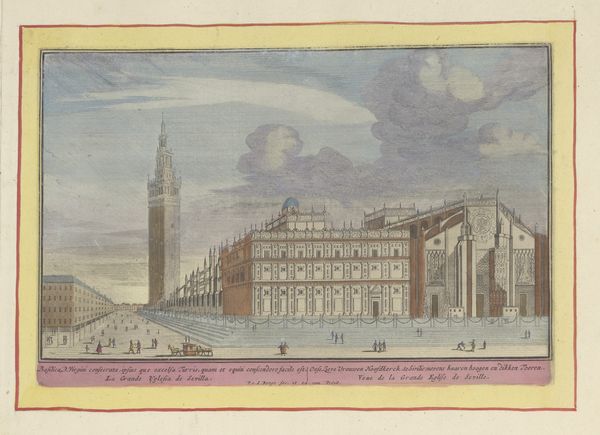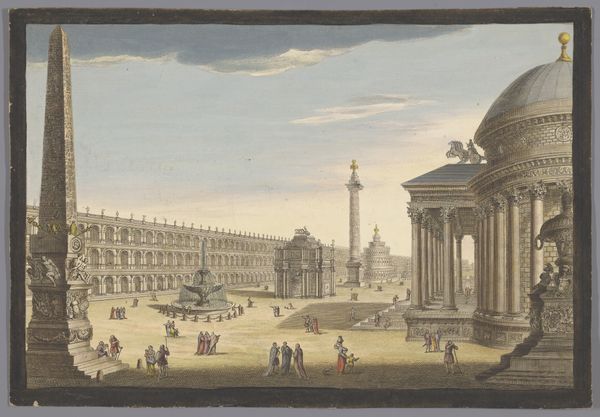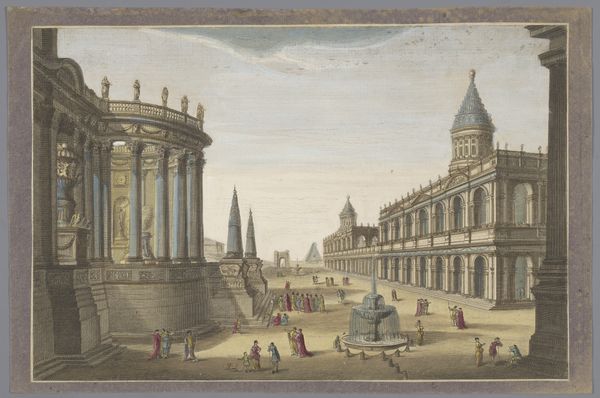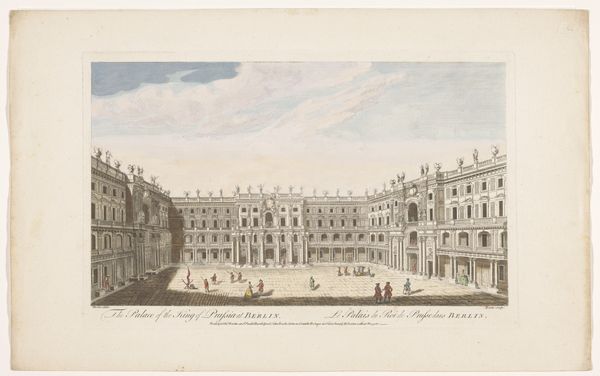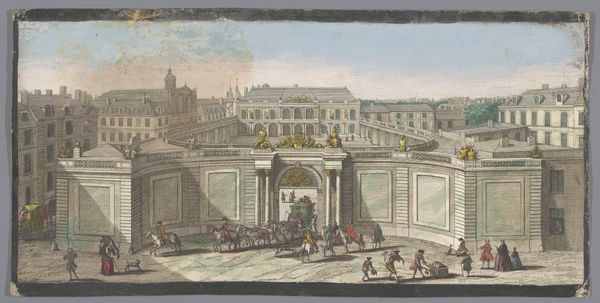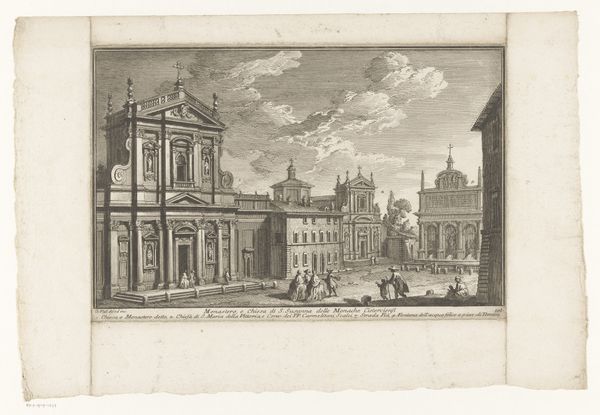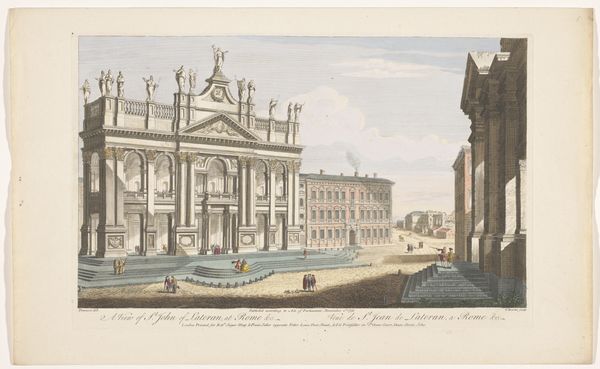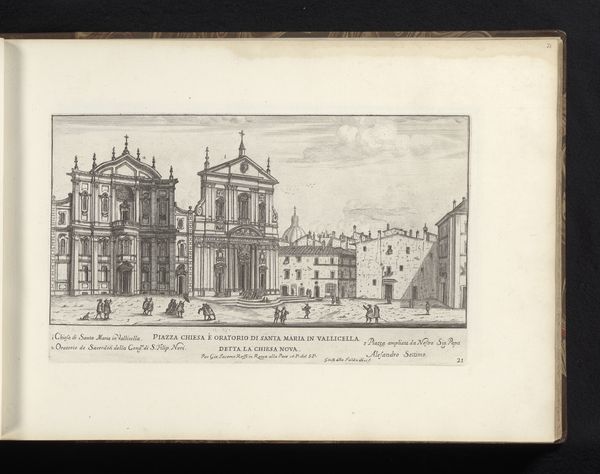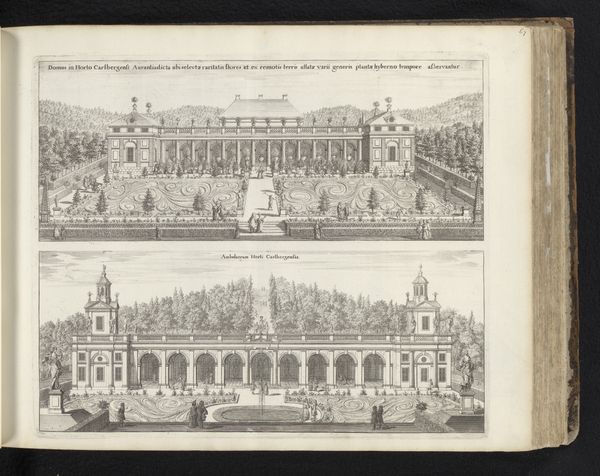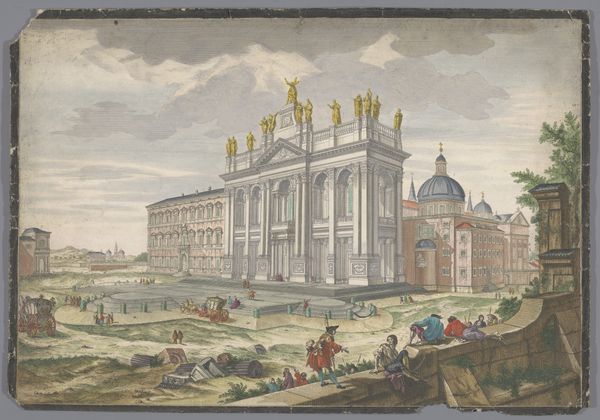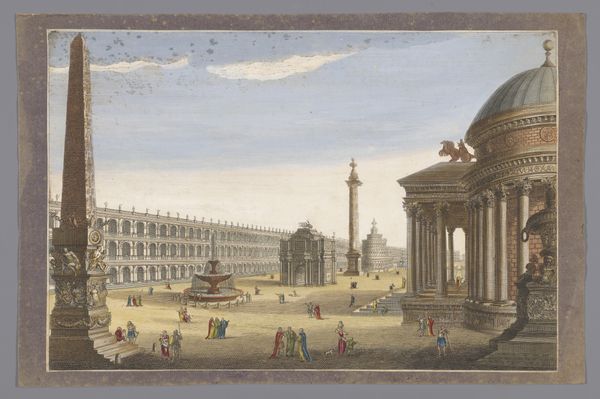
drawing, print, watercolor, engraving
#
drawing
#
water colours
#
baroque
# print
#
landscape
#
watercolor
#
cityscape
#
engraving
Dimensions: height 169 mm, width 253 mm
Copyright: Rijks Museum: Open Domain
Curator: Here we have Pieter van den Berge's "View of the Stock Exchange in Seville," created sometime between 1694 and 1737. It's a composite piece, using watercolor, engraving, and etching to depict the bustling commercial heart of the city. What strikes you first? Editor: The almost obsessive rendering of texture. Look at the stone facade of the buildings, the layers upon layers – you can practically feel the labor and the physical act of repetitive making. It feels both precise and incredibly detailed. Curator: Absolutely. Consider Seville during this period. As a key port in Spain’s colonial trade, the Stock Exchange was not merely a place of commerce; it symbolized Spain's power and wealth acquired through the exploitation of labor and resources in the Americas. The grandeur and scale of the building, so meticulously captured, are reflective of this historical context. Editor: And that etching! Notice how the artist meticulously captures the texture and the interplay of light and shadow, highlighting the architecture. The drawing captures how class distinctions become manifest in architectural and urban design. The building almost becomes a monument of that social hierarchy through these details of materials. Curator: Exactly. You see how Van den Berge uses perspective and scale to emphasize the importance of the Exchange within the cityscape. The figures are purposefully diminutive, placed in contrast to the massive building to underscore its imposing authority. Editor: The human figures give context. Van den Berge is representing a vibrant economy fueled by exploitation across an international mercantile web, revealing how such seemingly abstract systems of exchange were tied to the movement and transformation of raw materials and goods through complex global markets. The entire scene becomes a landscape of material extraction and distribution. Curator: Considering that lens enriches our appreciation. Van den Berge’s seemingly straightforward cityscape drawing becomes a powerful commentary on the socio-political forces at play during that era. Editor: Agreed. Looking at the ways these materials shape perception offers a stark view of a society built upon economic stratification. A drawing may reveal such historical details about mercantile capitalism if we look for its texture.
Comments
No comments
Be the first to comment and join the conversation on the ultimate creative platform.
